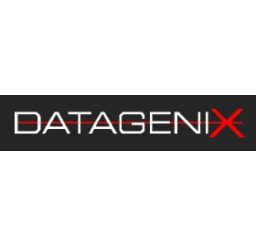
In the intricate landscape of healthcare, the evolution of health insurance claims processing software stands as a testament to the industry’s relentless pursuit of efficiency, accuracy, and technological innovation. This historical tapestry weaves together a narrative of key milestones and advancements, showcasing how claims processing software has transformed over the years. Furthermore, we’ll explore the exciting prospects and revolutionary changes anticipated as we approach the year 2030.
Early Beginnings: The Genesis of Claims Processing Software
The origins of health insurance claim processing software can be traced back to the early days of computing when mainframes and punch cards were the cutting-edge technologies of the time. Healthcare companies started experimenting with basic electronic systems for managing claims data in the 1960s. These antiquated technologies sought to expedite the compensation process, decrease human paperwork, and enhance data accuracy.
Milestones in the 20th Century: Shaping the Foundation
The late 20th century witnessed significant milestones in claims processing software development. Real-time technologies replaced batch processing at a critical juncture, facilitating quicker and more effective claims adjudication. Further streamlining data interchange and communication between healthcare providers and insurers was achieved with the development of standardized code sets, such as the Current Procedural Terminology (CPT) and the International Classification of Diseases (ICD).
The Rise of Electronic Data Interchange (EDI): 1990s
The wide acceptance of Electronic Data Interchange (EDI) in the 1990s brought about a paradigm shift. By lowering mistakes and speeding up the claims processing cycle, this technology enabled the safe electronic transmission of claims data between payers and healthcare providers. The foundation of contemporary claims processing systems is now EDI, which paved the way for later, more advanced innovations.
21st Century Innovations: Automation and Artificial Intelligence

The focus changed to automation and artificial intelligence (AI) as the new millennium approached. Predictive analytics, fraud detection, and automated claims adjudication are now possible because of the integration of advanced algorithms and machine learning capabilities into claims processing software. This period was revolutionary in that it greatly lowered processing times and improved the accuracy of claims decisions.
Interoperability and Integration: A New Era
Interoperability and smooth integration between various healthcare systems have become increasingly important in the late 2010s. Claims processing software evolved to become more interconnected, allowing for better coordination between electronic health records (EHRs), practice management systems, and claims platforms. This interoperability not only improved data accuracy but also enhanced the overall patient experience.
Imagine 2030: A Glimpse into the Future
As we stand on the brink of the 2030s, several exciting trends and advancements are poised to revolutionize health insurance claims processing software:
1. Blockchain Technology:
Enhancing data security, transparency, and integrity in claims processing is expected to be greatly aided by the decentralized and secure nature of blockchain technology. Healthcare providers’ administrative burden could be lessened by smart contracts on blockchain systems, which could automate and expedite claims settlements.
2. Predictive Analytics and AI Evolution:
AI algorithms will keep developing as they use enormous databases to identify abnormalities, forecast trends, and enhance procedures for processing claims. The incorporation of natural language processing (NLP) could potentially augment the software’s comprehension and extraction capabilities for pertinent data from unstructured data sources.
3. Telehealth Integration:
Claims processing software and healthcare services will continue to integrate more smoothly. A more precise and efficient compensation process for telehealth services will be made possible by real-time data transmission between virtual medical visits and claims systems.
4. Enhanced User Experience:
It is expected that claims processing software will have an intuitive and user-friendly user interface. By improving the user experience, healthcare providers will work more efficiently and the industry as a whole will see higher adoption rates.
5. Global Standards and Collaboration:
The healthcare industry is moving towards global standards for data exchange and interoperability. Collaborative efforts between countries and healthcare organizations will result in standardized processes, reducing complexities in cross-border claims processing.
Final Thoughts: Welcome to the Future
The historical journey of health insurance claims processing software reflects a relentless pursuit of efficiency, accuracy, and innovation. From its humble beginnings to the era of AI and blockchain, the evolution has been marked by transformative milestones. As we approach 2030, the industry is on the cusp of a new era, poised to embrace technologies that will further revolutionize the landscape of claims processing. The continued collaboration between technology developers, healthcare providers, and insurers will shape a future where the reimbursement process is not just efficient but also more patient-centered and globally interconnected. The historical tapestry of health insurance claims processing software is not just a reflection of the past; it is a canvas upon which the future of healthcare is being painted.
